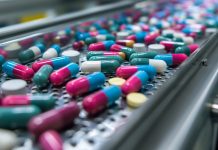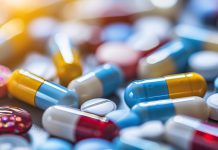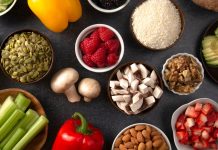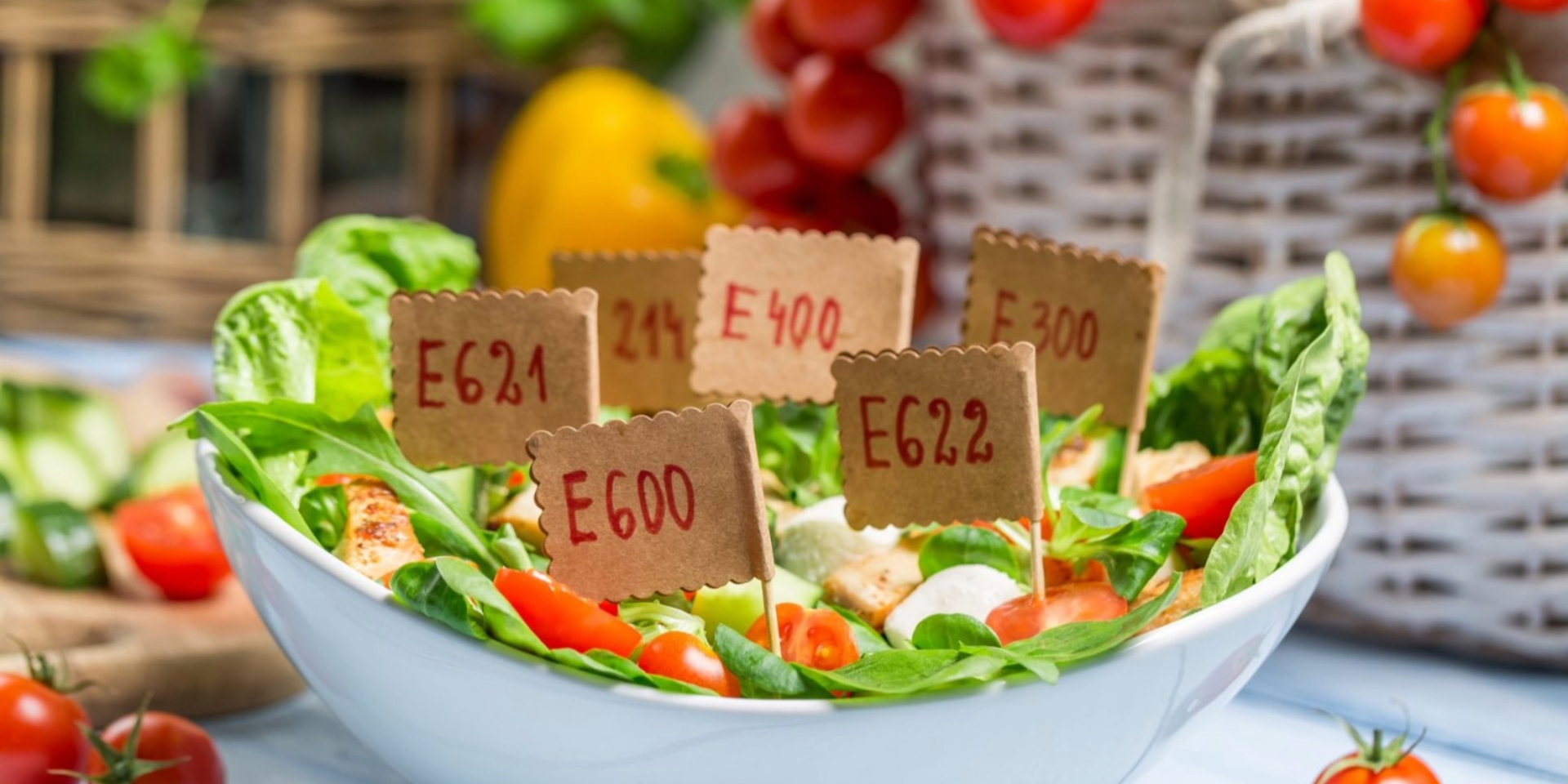The first part of this discussion essentially highlighted that, despite the alarming and catastrophic claims surrounding E-numbers, these substances are generally far less harmful than many believe. In the following section, we will examine some of the most criticised and controversial E-numbers in Romanian public discourse. Let’s begin with the one often described as “the most TOXIC/CARCINOGENIC additive”[1]: E330.
E330: the most carcinogenic additive?
According to some online sources, the so-called killer hiding behind this code number is citric acid—a white, crystalline substance commonly known as “lemon salt.” The name is hardly misleading, as the compound was first isolated in its crystalline form over 200 years ago from lemons by the Swedish chemist Carl Wilhelm Scheele (1742–1786). Lemon juice contains significant amounts of citric acid (approximately 5%). A 2008 study[2] found that tomato juice has citrate levels[3] comparable to those in orange, lemon, and mandarin juice, making it one of the richest sources of citrate.
If citric acid were truly toxic and carcinogenic, we should be avoiding citrus fruits and tomatoes—and perhaps even considering a ban on their sale as food. Not only is citric acid naturally present in citrus fruits and tomatoes, but millions of cells in our bodies continuously consume and regenerate it as part of one of the most fascinating biochemical processes: the tricarboxylic acid cycle, more commonly known as the Krebs cycle (named after German-born British biochemist Hans Adolf Krebs).
For this reason, there is no basis for believing that citric acid is toxic or carcinogenic. In fact, “Based on many experimental data in animals and on human experience, citric acid is of low acute toxicity. […] Citric acid is not suspected of being a carcinogen nor a reprotoxic or teratogenic agent.” In rats, the dose at which citric acid was repeatedly administered without any observed adverse effects—technically known as the No Observed Adverse Effect Level (NOAEL)—is 1200 mg/kg per day.
It’s hard to understand how the myth that citric acid is toxic or carcinogenic ever took hold. The most likely explanation lies in the fact that in German, Krebs is not only the surname of a Nobel Prize-winning scientist but also the word for “cancer.” For someone unfamiliar with biochemistry, the Krebs cycle might mistakenly be interpreted as the “cancer cycle,” leading to the misguided belief that citric acid is the “most TOXIC/CARCINOGENIC additive.”
E110: sunset yellow
E110 is a synthetic dye from the azo dye family, commonly known as Sunset Yellow FCF. Its case is more complex than that of citric acid, and based on current data, it is far from an ideal colouring agent. However, at the levels permitted for use, the risks appear to be minimal.
One theoretical concern regarding this dye is that it may contain up to 100 mg/kg of nonsulfonated aromatic amines. Some aromatic amines have been found to be genotoxic or even carcinogenic. However, in vitro genotoxicity studies, as well as long-term carcinogenicity studies, have not confirmed these risks. To date, at least 11 chronic toxicity and carcinogenicity studies have been conducted, and none have provided any evidence of a significant health hazard.
Only a very small amount of sunset yellow is absorbed into the body from the digestive tract, with the vast majority being excreted unchanged in the feces. Additionally, safety margins in humans are always at least 100 times lower than the doses at which no adverse effects have been observed in animal studies. For example, a study conducted in the late 1960s found that rats showed no adverse effects at a dose of 500 mg/kg of sunset yellow. Based on this data, a long-standing acceptable daily intake (ADI) of 2.5 mg/kg was set for humans—200 times lower than the dose that caused no harm in animals, providing a safety factor of 200.
In 2005, two studies conducted in India using locally manufactured dye—whose compliance with European quality standards was uncertain—suggested that even at a daily dose of 250 mg/kg administered over 90 days, some adverse effects could occur. These included impacts on testicular development in laboratory animals and increased total lipid levels and lipid fractions. Furthermore, the technical specifications and quality standards imposed by the European Union were found to be outdated in some respects, necessitating an update. To account for this new data, the European Food Safety Authority (EFSA) introduced an additional safety factor of 2.5, reducing the acceptable daily intake for humans to 1 mg/kg per day. This lower limit was set temporarily, for two years, during which a new study—conducted according to European scientific methodologies—would determine whether the findings from the Indian studies were valid.
Finally, there is another factor contributing to the perception of sunset yellow as a “questionable” dye. In 2007, a group of British researchers conducted a study on two groups of children (a total of 297), aged 3 and 8-9 years. They were given beverages containing two different mixtures of synthetic dyes (mixture A and mixture B), which included sunset yellow FCF and sodium benzoate as a preservative. The researchers observed a small but statistically significant effect on the children’s activity levels and attention span. This study was widely publicised as definitive proof of the dangers of food additives on child development. However, the actual effect observed was minor—around 10% of what is typically seen in children with attention deficit hyperactivity disorder (ADHD). Moreover, it was not observed in all children, nor was it consistently present across both dye mixtures.
To put things into perspective, what are the most common products consumed by children that contain the sunset yellow dye? According to EFSA statistics, the primary sources are soft drinks, fine pastries, and desserts. All of these tend to contain significant amounts of sugar and, in some cases, fats—adding to the already high intake of sweets among children. In the long run, these are likely far more harmful than a slight increase in hyperactivity; after all, the Western world is experiencing an obesity and diabetes epidemic. Furthermore, obesity is linked to an increased risk of several cancers, including those of the esophagus, pancreas, colon, endometrium, and kidneys. Simply avoiding giving children pastries and soft drinks with artificial colouring won’t reduce these risks. The real issue isn’t food additives—it’s what we eat.
Since the initial version of this article was written, several experimental studies have been published suggesting various negative health effects associated with this food dye. After reviewing all the available research, a recent 2024 review article concluded that the current acceptable daily intake (ADI) “seems to be a safe limit based on the available evidence, although higher doses can induce multiple toxic effects.”[4]
E123: the third defendant
E123 is the code name for amaranth, also known as azorubine or Acid Red 27. Like sunset yellow, it is far from being an ideal additive, but it is also far from the alarming and often catastrophic claims frequently made in the media. While there is a plant called amaranth, related to pigweed, that has red flower spikes, the synthetic dye has no connection to the plant other than its colour resemblance. It is not derived from amaranth; it was simply named after it due to its similar hue.
One influential Romanian online publication ran an article with the dramatic headline: “The E123 Additive in Wine and Soft Drinks Causes Fetal Death and Cancer.”[5] But is this claim true? What does the scientific data actually say about amaranth?
As with sunset yellow, the absorption of amaranth into the bloodstream is limited. However, some sulfonated aromatic amines formed through its metabolism in the intestines can enter systemic circulation. A genotoxicity test conducted on mice suggested that the substance might have genotoxic potential, but standard in vivo genotoxicity studies have yielded negative results. Furthermore, all carcinogenicity studies have also been negative—even when high doses of up to 1,250 mg/kg/day were administered over a two-year period. For this reason, experts from multiple European and international institutions have concluded that the substance does not pose a risk of genotoxicity or carcinogenicity.
| In 1976, the U.S. Food and Drug Administration (FDA) banned E123 based on three studies suggesting potential in utero toxicity. Two of these studies were conducted by Soviet researchers, while the third was an internal FDA study. However, controversy surrounds whether the Russian researchers actually tested amaranth at all—Dr. V. Wodicka, an FDA director at the time, reportedly stated after a visit to Russia that they had, in fact, tested a textile dye. |
Additionally, an internal FDA report highlighted significant flaws in the agency’s own study: some test animals were lost during the experiment, while others were given incorrect doses. Despite these issues, the FDA initially concluded that the study still supported the colourant’s safety. However, an external group of researchers expressed doubts, and the FDA commissioner ultimately decided to ban the substance. As a result, some still view the FDA’s long-ago decision as irrefutable proof that amaranth is dangerous.[6]
When it comes to fetal mortality, multiple studies conducted on mice, rats, rabbits, and dogs have found no adverse effects on fetal development. While some studies initially suggested embryotoxicity, follow-up experiments with improved design generally failed to confirm these findings (see box). The lowest dose at which no adverse effects were observed (NOAEL) was 15 mg/kg body weight per day in mice and rats, while in dogs, for example, it was 75 mg/kg per day. Based on this, EFSA applied a safety factor of 100 for humans, setting the acceptable daily intake (ADI) at 0.15 mg/kg body weight per day—a reduction from the previous limit of 0.50 mg/kg, which was in place until 2010.
According to data from six European countries, children consume amaranth almost exclusively from fish roe, and in doses roughly thirty times lower than the acceptable daily intake, making any potential risk extremely small. Adults, on the other hand, ingest the colourant mainly through wine-based beverages, often at significantly higher levels. In heavy consumers, intake can reach up to six times the acceptable daily intake. However, when comparing the potential effects of alcohol in these beverages with those of the colourant, it is likely that alcohol poses a far greater risk. Still, synthetic colourants are often easier to vilify than alcohol, which is naturally produced in wine.
Similar concerns have been raised about other colourants, such as E124 (Ponceau 4R), E131 (Patent Blue V), and E142 (Green S). For this reason, we will now turn to an analysis of two additional food additives with different functions beyond colouring.
E211: sodium benzoate
“Sodium benzoate is suspected of increasing cancer risk, worsening Parkinson’s disease, and affecting the liver, kidneys, skin, cardiovascular, nervous, and gastrointestinal systems.”[7] That certainly sounds alarming. However, as previously mentioned, benzoic acid occurs naturally in several fruits, including plums, apples, and blueberries, though in small concentrations (0.03–0.1%). In humans, doses of approximately 5 grams (about a teaspoon) of sodium benzoate have not been shown to cause any adverse health effects, as the body has an efficient mechanism for metabolising this compound. That said, higher doses—around 8 to 10 grams—can induce nausea and vomiting.
Contrary to claims that sodium benzoate increases cancer risk, experimental data have not supported such an effect. Studies in which rats were fed a diet containing 1–2%, or even as much as 5%, sodium benzoate daily showed no carcinogenic effects. Additionally, laboratory tests have confirmed that sodium benzoate is non-mutagenic. In direct contrast to the claim that it worsens Parkinson’s disease, a recent study suggests that sodium benzoate may actually have neuroprotective properties by promoting the formation of a specific protein called DJ-1.[8]
There is no evidence that sodium benzoate, at the concentrations typically used, harms the liver. However, some speculation exists regarding its potential conversion into benzene—a known carcinogen and hepatotoxin—in the presence of vitamin C. While this transformation is possible, studies analysing more than 100 different products have found only a very small number of cases where benzene levels exceeded permissible limits.
To provide a broader perspective, here is an assessment made by a British expert in 2018: “This benzene formation can occur naturally in a number of fruits, such as mangoes, cranberries, greengages, and cloudberries; as well as fruit juices with naturally-occurring levels of benzoic and ascorbic acids. In addition, should individuals consume soft drinks which contain these low levels of benzene, the resulting increase in their exposure to this chemical will generally be miniscule, as compared to their normal exposure to benzene from the atmosphere. It has been estimated that it is common for each of us to inhale, on average, 220 μg benzene every day from exhaust emissions; while cigarette smokers may be exposed to up to 7900 μg benzene per day.”[9]
The only well-documented adverse effect of sodium benzoate is its potential to trigger allergic reactions in some individuals. However, this alone does not justify banning the substance—just as the fact that some people are allergic to peanuts or strawberries does not warrant banning those foods from the market. People with a benzoate allergy should avoid products containing this additive. However, its inclusion in food is generally beneficial, as it serves as an effective antimicrobial and antifungal preservative. The risk of allergic reactions is significantly lower than the risk of foodborne infections that could arise in its absence.
Umami and the controversy around monosodium glutamate
E621, the code for monosodium glutamate (MSG), is often portrayed as a highly dangerous food additive. MSG is responsible for enhancing the savoury taste of many foods—a flavour known in Japanese as umami. Monosodium glutamate is a naturally occurring amino acid that we consume every day as part of dietary proteins. Proteins are essentially long chains made up of smaller units called amino acids. Among the 22 standard amino acids that form proteins in most plants and animals, one of them is glutamate. Additionally, some foods naturally contain free glutamate, meaning it is not bound within protein molecules.
Statistical data indicate that Europeans typically consume between 5 and 12 grams of glutamate per day—about 1 gram in its free form from food and around 10 grams as part of proteins. The amount of MSG added as a food additive accounts for only 0.3–0.5 grams per day in Europe, while in Asia, this figure ranges from 1.2 to 1.7 grams per day.[10] These numbers illustrate just how exaggerated concerns over MSG safety truly are, given that we naturally consume large quantities of it in our daily diet. Moreover, to dispel the misconception that MSG is a “chemical,” it’s worth noting that MSG used as a food additive is not synthetically produced. Instead, it is derived through biotechnological methods—specifically, fermentation.
Final thoughts
The topic of food additives is vast, and entire books have been written—and will continue to be written—on the subject. Naturally, there is much more to discuss than what has been covered here. However, the perceived danger of food additives is often greatly exaggerated when compared to the actual scientific evidence.
Moreover, the anti-additive narrative misleads many consumers by diverting their attention from the real issues of healthy eating. Instead of focusing on meaningful dietary choices, it fixates on a relatively minor concern. In other words, this narrative leads the average consumer to believe that simply avoiding foods with E-numbers is enough to maintain a healthy diet.
Someone could eat only “natural” foods and still have an unhealthy diet. When it comes to one of the most feared diseases—cancer—data published in the British Journal of Cancer (December 6, 2011)[11] estimate that tobacco accounts for about 20% of the risk, while alcohol contributes around 4%. Diet-related risks make up roughly 10%, broken down as follows: insufficient fruit and vegetable intake (4.7%), consumption of red and processed meat (2.7%), fibre deficiency (1.5%), and excessive salt intake (0.5%).
Food additives do not appear in this ranking—possibly because they were not specifically investigated. However, older studies have suggested that their overall contribution to cancer risk may be around 1%.[12]
There are, however, a few important considerations regarding a small number of food additives for which a cancer risk has been confirmed. Nitrites and nitrates, used in processed meats such as deli products and other processed meat products, can be converted in the body into nitrosamines—compounds known to have carcinogenic potential in humans. For this reason, the International Agency for Research on Cancer (IARC), part of the World Health Organization, has classified processed meat consumption as Group 1 carcinogenic, primarily linked to colorectal cancer.[13] Butylated hydroxyanisole (BHA) has been shown to induce certain malignant tumours in rodents, although there is no evidence that the same occurs in mammalian species without a forestomach, such as humans. Nonetheless, based on animal studies, IARC has classified BHA as a Group 2B substance (possibly carcinogenic to humans). As a precaution, some authorities and organisations prefer to avoid its use, though this stance has been criticised by some experts as unwarranted.[14]
A similar situation applies to aspartame, which IARC classified in 2023 as a Group 2B possible human carcinogen. However, both the FDA and EMA maintain that within established limits, its use poses no risk to human health.
In 2024, a team of French researchers published an observational study involving a cohort of 92,000 people, which found an association between higher consumption of certain food emulsifiers—specifically carrageenan and mono- and diglycerides of fatty acids—and increased risks of several cancers, including overall cancer risk, as well as breast and prostate cancer.[15]
Although such a correlation does not necessarily imply causation—and could, for example, be linked to the fat content of those foods or other risk factors—the study raises some concerns about a potential role these categories of substances (both of natural origin) might play in cancer development.
A second point worth considering is the growing body of evidence accumulated over the past two decades showing an association between ultra-processed foods and a wide range of health risks, including overall mortality, cancer, and cardiovascular, respiratory, gastrointestinal, and metabolic diseases. These foods are industrially manufactured and go far beyond basic processing—they are largely or entirely made from substances extracted from foods (such as oils, starches, sugars, and proteins), synthetic ingredients, and additives (including colourants, flavourings, emulsifiers, and preservatives).
The health risks linked to these foods may be partly due to the additives they contain. However, many researchers suggest that the risks also stem from changes to the food matrix itself—such as the removal of fibre and other health-protective nutrients—and from the way these products alter absorption kinetics, satiety, glycemic responses, and the composition or functioning of the gut microbiota.[16][17][18]
Therefore, while it is unlikely that most food additives pose a significant health risk—especially when consumed occasionally and in small amounts—industrially processed foods as a whole tend to be less healthy, and their consumption should ideally be limited or avoided.
The focus in nutrition should be on the overall quality of food, not merely on the presence or absence of additives. Eating and living healthily involves much more than simply choosing products labelled “free from E-numbers.” Still, it is often the case that foods containing such additives are far from being the healthiest options.


















